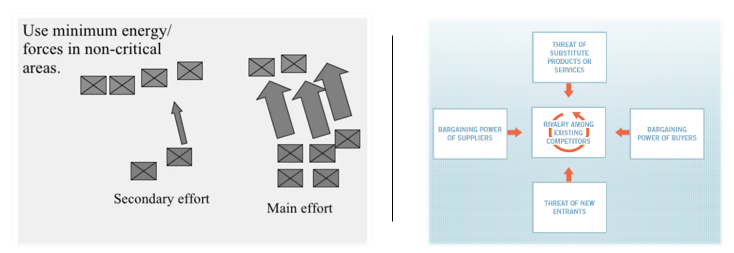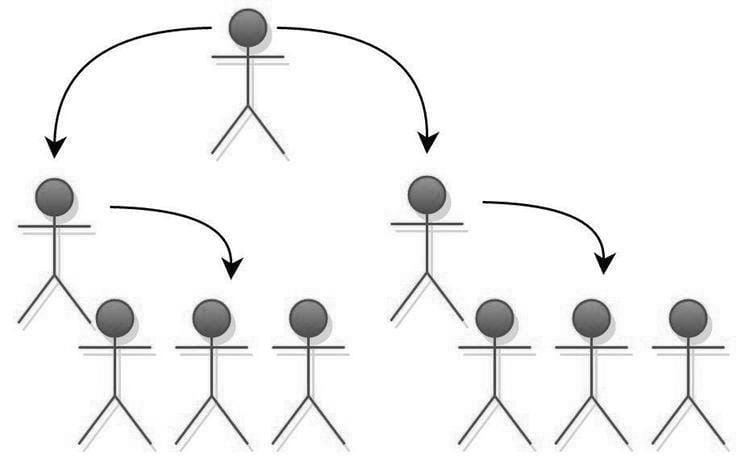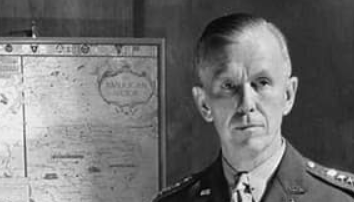- Formidable Function
- Posts
- LP/OP #7
LP/OP #7
Operational Balance: Tactical Precision and Strategic Patience
Welcome back to the LP/OP.
This newsletter shares insights from the highly pragmatic military methodologies learned throughout my nearly 20 years spent as a professional in the military and private sector.
Info is conveyed clearly and concisely with respect for your time.
Every week we cover new:
Tactics, Techniques, and Procedures (TTPs)
Inspirational Exemplars
This week, we delve into the strategic concepts of Economy of Force, Strategic Patience, and Unity of Command, and how they align with The Law of Reversed Effort and the principle of balance.
Mastering these techniques can provide a strategic advantage in various scenarios, from business negotiations to personal interactions.
Embrace the power of balance and effort.
Tactic: Economy of Force

Economy of Force involves the efficient and effective use of resources. It means allocating the minimum essential combat power to secondary efforts while focusing the bulk of resources on achieving the primary objective.
Business: In business, economy of force translates to prioritizing resources and efforts to maximize impact. This involves careful planning and strategic allocation of time, money, and personnel to ensure the main goals are achieved without wasting resources on less critical tasks.
An example is Amazon’s strategic focus on superior efficiency in resource distribution to maintain its market position. Amazon implements the economy of force principle expertly and is in fact a phenomenal case study for parallels between the Principles of War and business.
Personal: Personally, practicing economy of force means managing your energy and time wisely. By focusing on the most important aspects of your life and minimizing effort on less critical areas, you maintain balance and avoid burnout.
Balance: This concept aligns directly with the principle of balance, ensuring that your efforts are sustainable and well-directed, leading to greater overall effectiveness.
If you exhaust all your resources on a long shot, or even in singular instances that are relatively low-risk, you actually increase your chances of burnout or business failure.
Be efficient with your resources.
Technique: Strategic Patience

Strategic Patience is the ability to wait for the right moment to act, balancing immediate desires with long-term goals. It involves understanding that sometimes the best course of action is to delay action until conditions are more favorable.
Business: In the business world, strategic patience can mean waiting for the right market conditions before launching a product or making a major investment. It involves long-term planning and the discipline to hold off on immediate gains in favor of greater future rewards. This approach is essential for maintaining competitive advantage in dynamic markets (Read: War and Business).
Personal: Strategic patience involves taking the time to plan and prepare for significant life events or decisions. This could mean waiting for the right opportunity in your career or personal life, rather than rushing into something unprepared.
The Law of Reversed Effort: The Law of Reversed Effort suggests that sometimes the harder you try, the less you succeed. Strategic patience aligns with this principle by emphasizing the benefits of waiting and allowing things to develop naturally, rather than forcing outcomes prematurely.
Procedure: Unity of Command

Unity of Command ensures that all forces operate under a single, coherent strategy. This principle eliminates confusion and ensures that all efforts are coordinated towards achieving the overall objective.
Business: In a corporate setting, unity of command means having clear leadership and a unified strategy that all employees understand and follow. This cohesion ensures that everyone works towards the same goals, enhancing efficiency and effectiveness. The "Five Forces" framework by Michael Porter highlights how clear strategic direction can streamline operations and improve competitive positioning.
Personal: Unity of command translates to having a clear sense of direction and purpose. By aligning your actions with your core values and goals, you create harmony in your efforts and reduce internal conflict.
The Law of Reversed Effort: Applying the Law of Reversed Effort here means that sometimes, less direct control can lead to better outcomes. By fostering trust and autonomy, you allow for natural alignment and creativity, enhancing overall performance.
Inspiration: General George C. Marshall

General George C. Marshall - General of the US Army (1944-1945)
U.S. Army Chief of Staff during World War II and was promoted to Five-Star General of the Army until his retirement in 1945.
Marshall exemplified the principles of Economy of Force, Strategic Patience, and Unity of Command in his strategic leadership.
Marshall was one of the most influential military leaders and statesmen of the 20th century. Serving as Chief of Staff of the U.S. Army during World War II, he was instrumental in organizing the Allied victory, overseeing the expansion and training of the U.S. military, and planning major operations. After the war, he became Secretary of State, where he developed the Marshall Plan, an ambitious program to rebuild Europe’s economies and prevent the spread of communism. Later, he also served as Secretary of Defense, guiding the U.S. military during the early stages of the Cold War.
Marshall's leadership and vision also earned him the Nobel Peace Prize in 1953 for his efforts in promoting world peace and stability.
Marshall’s Economy of Force: Marshall's ability to allocate resources efficiently was crucial during the war. He prioritized the deployment of forces and resources to key theaters of operation, ensuring that efforts were concentrated where they were most needed.
Marshall’s Strategic Patience: Marshall demonstrated strategic patience by meticulously planning and waiting for the right moment to implement key strategies during the war. His ability to balance immediate pressures with long-term objectives was crucial to the Allied success.
Marshall’s Unity of Command: Marshall’s leadership ensured a unified command structure among the Allied forces. His strategic vision and clear communication helped coordinate efforts across multiple fronts, leading to a cohesive and effective military strategy.
Outbrief
Practice strategic patience, allocate your resources wisely, and maintain a unified direction.
Add these TTPs to your expanding knowledge base to become more effective for your team and/or for yourself.
Economy of Force
"Prioritize your efforts to maximize impact and maintain balance."Strategic Patience
"Wait for the right moment to act for greater long-term success."Unity of Command
"Align your actions under a clear purpose to achieve harmony."
General George C. Marshall exemplified these strategic concepts, reminding us of the power of patience, efficient resource use, and unified direction.
Consider how General Marshall’s mastery in leadership and strategic planning can inspire your approach to daily challenges. By adopting these military-tested strategies, you can develop a leadership style that is both proactive and reflective. Embrace the patience needed for long-term success, the discipline to manage resources efficiently, and the focus to stay aligned with your goals. Apply these principles with intention, and you’ll see significant progress in your own endeavors, following in the footsteps of one of history’s greatest leaders.
In no time, you will find yourself more balanced and formidable.
Thank you for reading, genuinely.
Stay balanced.
Stay formidable.
— Ryan “DQ” DeQuiroz —